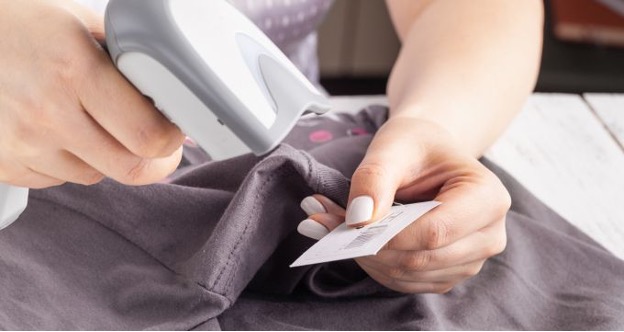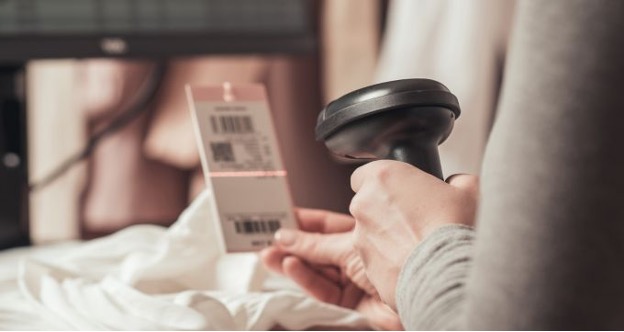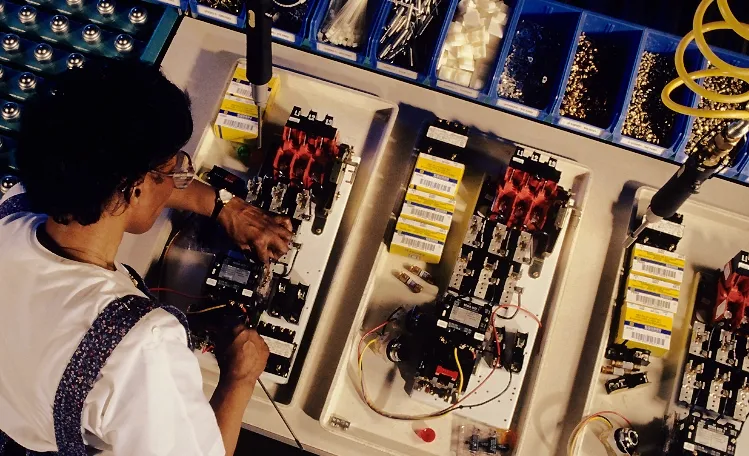Streamlining Fashion Retail: Exploring the Power of Barcodes for Efficient Clothing Management and Enhanced Shopping Experience

In the world of fashion retail, streamlining operations and providing an enhanced shopping experience is crucial for success. One powerful tool that has revolutionized the industry is the use of barcodes. By exploring the power of barcodes in clothing, fashion retailers can achieve efficient clothing management and deliver a seamless shopping experience.
According to Statista, a survey conducted in June 2022 reveals that about 83 percent of general retailers in the United States and the United Kingdom believed that their customers would opt for other merchants if they did not offer barcode and QR code scanner apps to the shoppers.
Barcodes enable accurate and swift inventory management, quick and hassle-free checkout processes, and improved customer satisfaction.
Enhance Clothing Management with Barcodes
The clothing industry poses unique challenges in managing inventory due to its vast array of colors, sizes, and designs. However, introducing barcodes has revolutionized clothing management by providing an efficient inventory tracking and control solution. Here’s how:
Better Inventory Management and Control
Barcodes are a game-changer for inventory management and control in the fashion industry. When a customer purchases a specific product, the barcode is scanned at the point of sale, automatically deducting it from the inventory count. This real-time updation prevents stock discrepancies and facilitates precise stock audits.
Similarly, with a simple scan of the barcode on displayed apparel, employees can instantly access information about the availability of different sizes and colors of the same design in their inventory. This lets them quickly track and locate specific items, resulting in faster customer service.
Supply Chain Optimization
The fashion industry benefits significantly from supply chain optimization, and barcodes play a pivotal role in it. With the help of barcodes, fashion retailers can streamline their supply chain processes, reduce errors, and enhance overall productivity.
For instance, QR codes on clothing items or packages can be used to track and trace products at every stage of the supply chain, from manufacturing to distribution. By using barcode scanners for clothes, retailers can accurately monitor inventory levels, identify stock shortages, and facilitate timely reordering. This enables them to meet customer demands effectively while minimizing excess inventory.
Furthermore, barcodes provide visibility into clothing item locations, allowing retailers to manage logistics and ensure timely deliveries.
Loss Prevention
Barcodes on clothing prove to be a valuable tool for loss prevention in the fashion industry by minimizing loss. Barcodes allow businesses to efficiently monitor their inventory while also providing a mechanism to identify and address discrepancies in data.
For instance, consider a fashion retail store that employs barcodes to manage its inventory. As new products arrive, employees can scan each item, instantly updating the database and stock levels. During regular stock audits, any discrepancies between the physical stock and the database can be quickly spotted, enabling the store to take the necessary action to rectify issues such as theft, misplacement, or even administrative errors.
Streamlined Restocking
With barcodes, fashion retailers can track inventory levels in real time. By scanning barcodes during restocking, the system can immediately update stock levels, providing accurate information on available quantities.
Additionally, by analyzing barcode data, retailers can identify which apparel styles, sizes, or colors are most popular among customers. This valuable insight enables them to make informed decisions and reorder popular items on time, ensuring they always have enough stock for high-demand products.
Conversely, barcodes help retailers recognize less popular styles that customers rarely choose.
By leveraging this information, retailers can ensure the timely restocking of popular items, maintain customer satisfaction, and avoid stockouts.
Optimizing the Shopping Experience with Barcodes
Barcodes have revolutionized the shopping experience for fashion enthusiasts, optimizing their search for trendy dresses.
International fashion brands like Ralph Lauren have used barcodes for efficient stock management and to provide a better shopping experience to their customers.
Easy and Faster Billing

Shopping can become a frustrating experience for customers when they find themselves stuck in long queues at the billing counter. The queues can be so overwhelming that they might contemplate leaving all the items they intended to purchase and simply walk out of the store! In such instances, customers might even be tempted to explore other shops if they spot never-ending lines.
Fortunately, barcodes provide a smart solution to address these exasperating encounters by offering a way to enhance your customers’ shopping experience, making it smoother and faster. Customers can head to self-billing counters instead of waiting in line for a cashier. They can easily scan the barcodes on their chosen items at these designated counters. Once they’ve completed the scanning process, a bill will be automatically generated, and they can proceed to make payment for their purchases right then and there. No more endless waiting in queues!
By implementing barcode scanning and self-billing counters, stores can significantly reduce customer wait times, leading to increased satisfaction and a more pleasant shopping experience overall.
Product Information Accessibility

One notable application of cloth barcodes is providing detailed product information and reviews. For example, a cloth barcode on a dress can lead customers to a website that offers tips on sustainable product care, such as washing and drying instructions.
Additionally, the website may provide insights into the materials used, the country of origin, and the production process of the garment, allowing customers to make informed purchasing decisions aligned with their preferences and values.
Furthermore, some barcodes may even reveal the carbon footprint associated with each garment and share the narrative behind the design, creating a more engaging and transparent shopping experience.
Easy Returns
Barcodes play a crucial role in enhancing the customer experience in the fashion industry, particularly when it comes to easy returns. Consider a situation where you need to return a recently purchased dress for any reason. When you approach the retailer to initiate the return process, it can sometimes be challenging for them to locate your purchase details, especially if you’ve lost the receipt or during busy periods.
However, the return process becomes significantly streamlined with a barcode scanner for clothes. A simple scan of the cloth barcode can retrieve all the necessary billing details associated with your purchase, expediting the return process and eliminating the need for time-consuming manual searches.
Enhancing Customer Experience by Providing Them with Styling Tips
Barcodes in the fashion industry offer more than just product information. They can also provide customers with valuable styling tips, enhancing their overall shopping experience. For instance, unique barcodes can be affixed to garments, and upon scanning, they can offer customers suggestions on what type of t-shirt, shirt, or bag would complement the jeans they are considering.
These styling tips help customers visualize complete outfits and make more informed fashion choices. This helps customers make confident purchase decisions and strengthens the connection between customers and the brand.
Popular Barcodes That Help in Clothing Management and Fashion Retail
1D barcodes, such as UPC and EAN, have been widely used for fashion retail and packaging. They contain information such as item size, brand name, batch number, color, etc.
However, there is a growing trend toward adopting 2D barcodes due to their ability to store more data and offer improved scanning capabilities. In response to this shift, the GS1 Sunrise 2027 initiative has been introduced, aiming to gradually replace UPC and EAN barcodes with QR and Data Matrix codes.
2D barcodes provide enhanced data storage capacity, allowing businesses to include more product information. Additionally, the improved scanning capabilities of 2D barcodes enable faster and more accurate scanning, enhancing efficiency and customer experience.
Thus, 2D barcodes are becoming the preferred choice in the fashion industry, phasing out 1D barcodes gradually.
Add Barcode Scanning to Your Fashion Store
Integrating Dynamsoft Barcode Reader SDK can be an invaluable asset for fashion stores and clothing management. Its seamless implementation into your system allows you to streamline various processes and significantly enhance overall efficiency across various business operations.
With this powerful SDK, users can effortlessly and accurately scan barcodes on clothing items, ensuring precise inventory management, eliminating stock discrepancies, and ultimately improving the customer experience.



 Blog
Blog